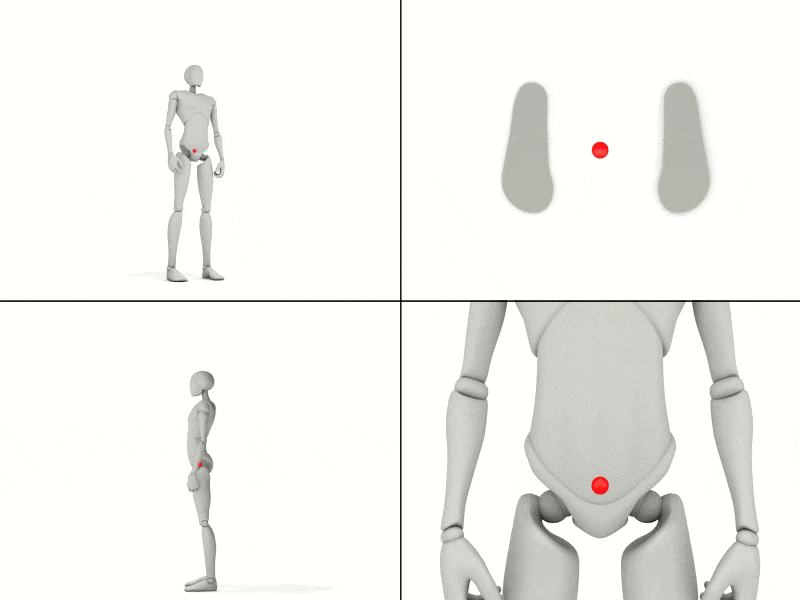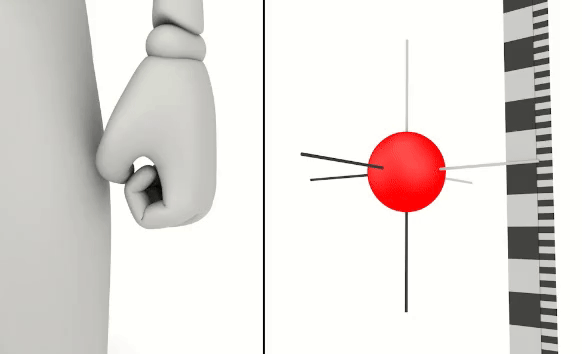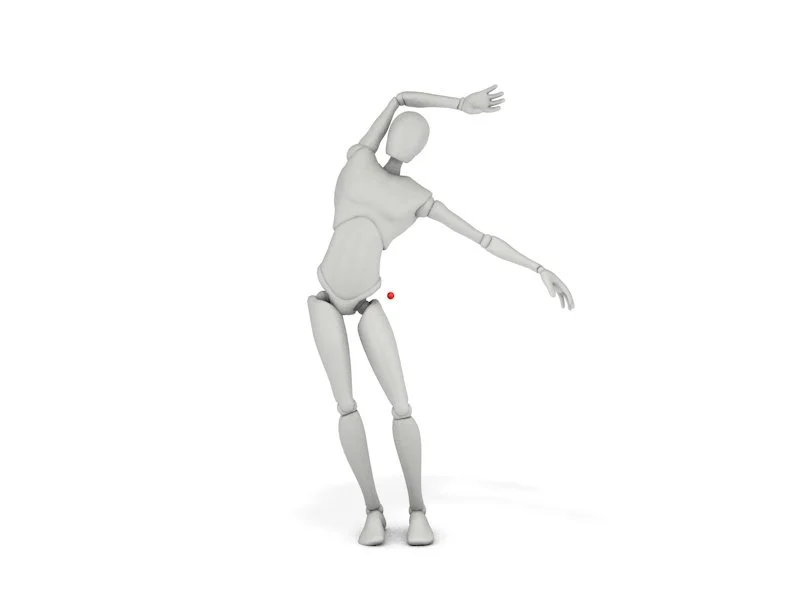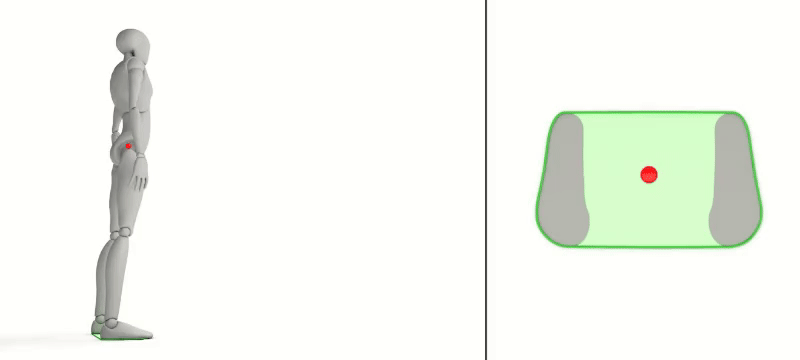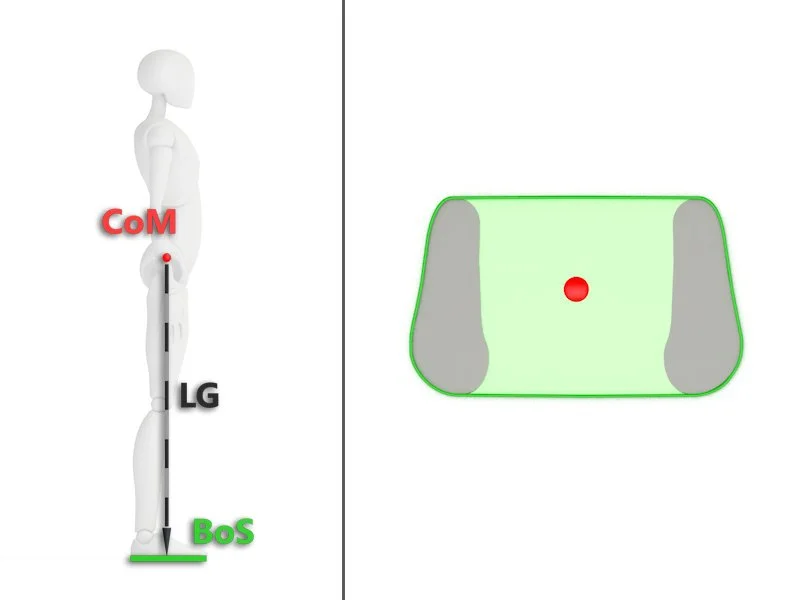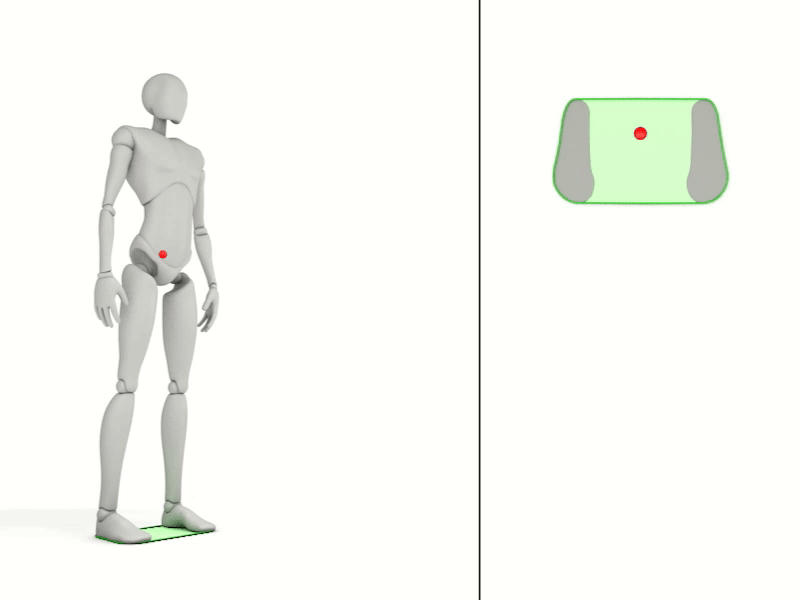MOVEMENT AND THE CENTER OF MASS EXPLAINED
INTRODUCTION
The center of mass (CoM) is the point where an object’s total mass is considered concentrated. For solid, unchanging objects, this point stays fixed. But the human body is different — because it’s made of many moving parts, the center of mass constantly shifts as we move and change posture.
With the help of the 3D animations included in this article, plus clear explanations, you’ll explore how the CoM moves during basic body motions.
This understanding will deepen your awareness of how movement affects the CoM and why it’s crucial for maintaining balance and stability. By gaining this insight, you can improve your control over motion and enhance overall physical performance.
VISUALIZING MOVEMENT AND THE CENTER OF MASS
To really grasp how our body’s movement impacts the CoM, visual examples are key. Below, we showcase various body motions along with explanations on how shifts in posture change the CoM. These visuals reveal how balance is maintained — or lost — and why these subtle shifts are so important for stability.
MOVEMENT AND CENTER OF MASS SHIFTS
The animation below is divided into four quadrants, each showing a different view of the same figure in motion. A red dot marks the CoM, which shifts instantly as the figure moves. This highlights a crucial fact: the CoM is never fixed — it constantly adapts to our posture and body configuration.
Every body part has mass, so even the slightest movement in one segment affects the CoM. For example, simple actions like breathing — where inhaling and exhaling create subtle shifts — influence the CoM’s position. Even moving a single finger causes measurable changes, though small. These tiny oscillations add up and contribute to overall balance control.
These animations emphasize that every action — big or small — contributes to shifting the CoM.
CENTER OF MASS BEYOND THE BODY OUTLINE
Certain postures cause the CoM to move outside the body’s physical outline, depending on how limbs and torso are positioned. Since each body part carries weight, their arrangement affects overall mass distribution.
For instance, when bending forward, the upper body leans out while the lower body shifts backward to maintain balance. This moves the CoM outside the physical body boundary, but still above the base of support (BoS).
A similar effect happens during a side bend — the torso curves sideways, shifting the CoM beyond the body’s outline but within the BoS.
In both cases, balance is maintained but requires extra effort from muscles and joints to counteract gravity. These examples clearly show how posture and alignment constantly influence stability.
CENTER OF MASS AND BASE OF SUPPORT INTERACTION
Balance relies on the relationship between the CoM and the BoS.
On the left, a side view shows the red dot marking the CoM. On the right, that dot is projected vertically onto a top-down view of the feet, which define the BoS — the area covered by the outermost contact points with the ground (marked in green).
As the figure moves forward and backward, the CoM moves accordingly. Balance is maintained as long as the CoM stays vertically above the BoS. But when the CoM crosses the BoS boundary, stability drops and falling becomes likely.
The two images below illustrate standing balance:
One shows a stable stance where balance is kept.
The other captures a moment of losing balance.
Each image highlights three key elements:
CoM (Center of Mass): The point where body mass centers relative to posture.
LG (Line of Gravity): A vertical line from the CoM showing gravity’s pull.
BoS (Base of Support): The area under the feet providing physical support.
Here, balance is stable — the LG falls inside the BoS (green outline), meaning the CoM is properly aligned.
Balance is lost — the LG falls outside the BoS (red outline), showing the CoM has moved beyond support, leading to instability and possible fall.
BALANCE CONTROL IN EVERY STEP
The animation below shows how the CoM and BoS work together to maintain balance while stepping.
The red dot marks the CoM, and the green area outlines the BoS. When the CoM moves beyond the BoS limits, the body starts to tip and lose stability. To avoid falling, the BoS must shift to bring the CoM back over it. The body often does this by stepping, creating a new, larger BoS that supports the shifted CoM.
This isn’t just a reaction to losing balance — it’s the same fundamental cycle that happens during normal walking. Walking is a repeated pattern where the CoM moves ahead of the BoS, triggering a step that repositions the BoS underneath it and restores balance, ready for the next step.
CONCLUSION
Balance and movement are more than just physical acts—they are the result of a delicate and continuous interaction between your body’s center of mass and its base of support. By understanding how subtle shifts in posture and motion influence this relationship, you can improve your body awareness and movement efficiency in everyday activities and athletic performance alike.
Whether you’re an athlete looking to enhance stability or simply want to move more confidently, applying these insights can make a meaningful difference.

